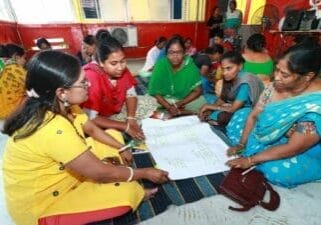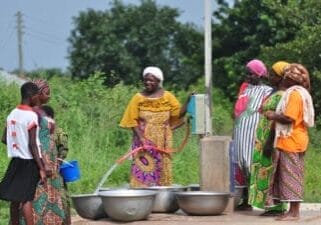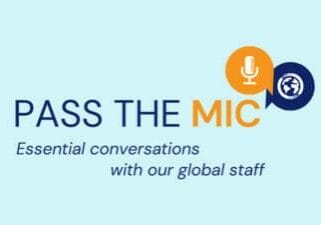News > Blog
Syria’s Crisis: Helping Families Survive in War-torn Areas
Published 05/23/2016 by Global Communities
By Pia Wanek, Director of Humanitarian Assistance, Global Communities
This article originally appeared in Devex.
In a humanitarian crisis, the image of emergency aid is often one of distribution: boxes of food, blankets and other staples being flung off of flatbeds into outstretched hands. Yet as the Syrian conflict enters its fifth year, emerging evidence suggests that the most effective form of assistance inside the country may come in the form of cold hard cash.
This shifting image of “aid” is also common in development settings. Effective cash transfers are linked to increased spending, higher school enrollment and improved health outcomes. The United Nations promotes cash transfers as a preferred form of assistance when markets and contexts allow, and a recent Global Communities assessment in Syria revealed that typical in-kind aid may not be meeting families’ top needs. While cash assistance is used widely among Syrian refugee communities in neighboring countries, it is less common within the war-torn country.
Global Communities conducted an assessment of the viability of cash transfers in 10 Syrian districts in partnership with the U.N. High Commission for Refugees and the Johns Hopkins School of Public Health. Of 400 sampled households from 20 communities, 60 percent reported receiving some form of humanitarian assistance in the preceding four months. In-kind aid was the most commonly received.
Alternatives to cash are not as appealing to recipients; 21 percent said they would not want vouchers, for example. Qualitative evidence suggests that voucher’s comparatively lower rate of favorability stems from concerns that vendors inflate prices for items bought with them. Respondents also did not like the fact that vouchers limit what items they can purchase. With cash, they can buy the items they need most, and have more dignity making choices about their own top needs. This is supported by studies that show that cash is spent wisely when used in global development efforts.
Cash transfers are not without their risks or challenges, and NGOs must remain vigilant about the potential risks of cash delivery. NGOs and the donors on whose behalf they work must implement specific, practical mechanisms for ensuring that targeted beneficiaries receive the cash, and that it is not diverted for criminal acts or to support terrorism.
The humanitarian community is already implementing several measures to offset these risks, including recording the serial numbers of bills disbursed to facilitate tracking and prevent laundering or misuse; reducing the visibility of distribution points by staggering the timing and location of payments; putting in place an anonymous hotline for reporting suspicious activity without fear of retaliation; and conducting door-to-door post-distribution monitoring.
It is also crucial that implementers act on feedback from beneficiaries about how the system can be made more effective. Informed beneficiary selection and verification also mitigates the risk of cash being used to support criminal elements.
We must also ensure we are not disrupting local markets. For example, cash can potentially cause inflation, the burden of which would be felt most by people not receiving aid in the host community. Cash can also lead to supply shortages and increase tensions within households. And beneficiaries may become overly reliant on cash transfers, growing accustomed to expecting them indefinitely. Ensuring sustainability and stability is key.
Currently, the local market in Syria appears to be capable of absorbing an influx of cash, and would even benefit from it. Cash helps spur on Syria’s sputtering economy by employing local residents and growing business opportunities within local markets. Receiving assistance in-country would also save beneficiaries the difficulties they often face when trying to access funds from overseas.
It is essential for NGOs, donors and others to recognize Syrians’ changing needs and adapt assistance accordingly. In some cases, more flexibility is appropriate, especially when circumstances can change rapidly. NGOs might consider a payment approach that blends the different aid mechanisms — both cash and in-kind aid — where necessary.
Unfortunately, the Syrian conflict shows no signs of abating. Cash transfers have promise in this specific context, and it is critical that humanitarian response actors adapt methodologies accordingly and seek feedback from the people they serve on which assistance mechanisms are most effective.
About the Author: Pia Wanek is director of humanitarian assistance at Global Communities, which works closely with communities to help them recover and eventually rebuild in the wake of both man-made and natural disasters. She has directed the team’s response for a variety of crises, including the West African Ebola epidemic, the 2014 war in Gaza, and the ongoing Syrian conflict. Wanek has more than 12 years of experience in the donor community and the NGO world.





